
A lot of our lives now involves staring at phone and computer screens. I recently posted an article about how visible light can damage your skin, and how to prevent it from happening. The key takeaways:
- Visible light can theoretically damage your skin
- Higher energy blue wavelengths is the harmful portion of the spectrum
- It causes pigmentation in dark skinned people, but without the same effects as UV
- There are a few ingredients that can protect your skin (but not sunscreen)
I’m sure you’ve all heard that blue light messes up your sleep – but what about your skin? Should we worry about the blue light from screens damaging our skin, or is it yet another example of everyone hating on millenials?
Is reading my blog making your skin age? (Sorry in advance!)
For the video version, click here.
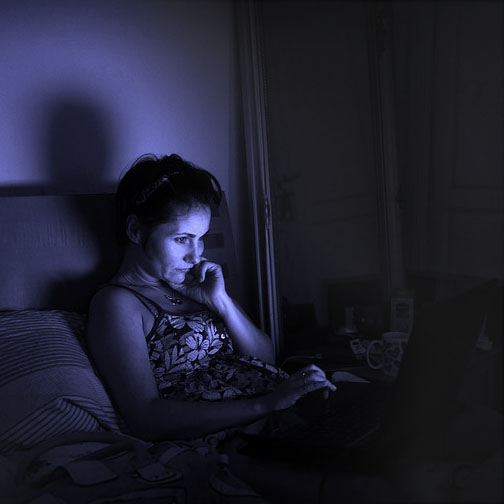
How much blue light causes skin damage?
First, a quick note on units:
- J/cm² means joules per square centimetre. This measures how much light energy hits the skin in total, and is called the flux or the dose.
- W/cm² means watts per square centimetre. One watt is one joule per second – in other words, this tells us how intense the light hitting the skin is (energy over time), and is called the irradiance.
Let’s recap the amounts of visible and blue light that can cause skin damage in human volunteers:
| Study | Wavelengths | Dose (Flux) | Intensity (Irradiance) | Volunteers | Effect |
|---|---|---|---|---|---|
| Liebel et al. (2012) | Visible (400-700 nm) | 50 J/cm² | 0.150 W/cm² | No details | Increased free radicals by 85.8% |
| Mahmoud et al. (2010) | Visible (400-700 nm) | 40 J/cm² | 0.200 W/cm² | Dark skin (IV-VI) | Minimum for pigmentation in all |
| Ramasubramaniam et al. (2011) | Visible (>420 nm) | 30-120 J/cm² | Unknown | Dark skin (IV-V) | Pigmentation (measured with spectrophotometer) |
| Kleinpenning et al. (2010) | Blue (380-480 nm, peak 420 nm) | 20 J/cm² per day, 5 days (100 J/cm² total) | Unknown | Light skin (I-III) | No discomfort, DNA damage, inflammation or photoaging No change in p53 One volunteer had slightly increased pigment |
| Duteil et al. (2014) | Blue (415 nm) | 43.5, 87.5 J/cm² | Unknown | Medium skin (III-IV) | Lasting hyperpigmentation (similar to 1.5 MED of UV) but no change in p53 |
| Vandersee et al. (2015) | Blue (380-495 nm, peak 440 nm) | 50 and 100 J/cm² | 0.100 W/cm² | Light skin (II-III) | Carotenoids (antioxidants) in skin measured 50 J/cm²: levels dropped but restored after 1 hour 100 J/cm²: required 24 h to be restored (but almost half restored at 2 h) |
It’s a little tricky because different experiments used different wavelengths of light, but this gives us a ballpark figure: the studies have used at least 40 J/cm² of light.
It’s not really worth looking at in vitro studies where skin cells in petri dishes have light shone on them – real skin has dips and furrows and dead skin cells protecting the living cells underneath, so real skin can handle more light.
How much visible and blue light do we get from the sun?
The intensity of sunlight depends on where you are and the time of year, but here are some sample amounts:
- Summer in Texas: 0.05 W/cm² visible light = 13.3 minutes to get 40 J/cm²
- Average at ground level at midday according to ASTM standard: 0.044 W/cm² visible light = 15.2 minutes to get 40 J/cm²
- Midday at Bangalore, India, unknown time of year: 0.035-0.040 W/cm² visible light = 16.7-19.0 minutes to get 40 J/cm²
- Average in US or South Europe at midday, ASTM standard: 0.0161 W/cm² blue-violet light = 41.4 minutes to get 40 J/cm²
So it’s around 15 minutes of midday sun to get the minimum dose of visible light in summer. Light intensity in winter is typically between 1/3 or 2/3 of the summer values.
How much visible and blue light do we get from screens?
Now let’s have a look at how much light different sources produce, and how many hours we’d need to get 40 J/cm² of light.
One study measured the light from CRT, LCD and LED monitors that were 15-21.5 inches in size that were playing movies or video games. They were set at 50% brightness. They found that, on average, these sources projected 1-2 µW/cm² of visible light onto a surface (i.e. your face) 18 inches (45 cm) away, with LCD screens producing 40% more than CRT screens, and LED screens producing 80% more. The highest energy measured in this study at any point was 9.7 µW/cm² of visible light from the LED monitor.
- Computer screens (15-21.5 inches, 45 cm away, 50% brightness): 1-2 µW/cm² visible light = 20-40 million sec or 7.5-15 months to get 40 J/cm²
- LED screen maximum (21.5 inches, 45 cm away, 50% brightness): 9.7 µW/cm² visible light = 47.7 days to get 40 J/cm²
Other studies have found higher amounts of visible light from screens. A study measured the light from a few different devices at the manufacturer’s recommended reading distance in a dark room.
- Kindle paperwhite (6 inch screen, 35 cm away, 50% brightness): 14.30 µW/cm² visible light = 32.4 days to get 40 J/cm²
- iPad, text on white background (9.7 inch screen, 35 cm away, auto brightness): 110.80 µW/cm² visible light = 4.18 days to get 40 J/cm²
- iPad, Angry Birds (9.7 inch screen, 35 cm away, auto brightness): 60.20 µW/cm² visible light = 7.69 days to get 40 J/cm²
- iPhone 5s, text on white background (4 inch screen, 22.5 cm away): 19.8 µW/cm² visible light = 23.4 days to get 40 J/cm²
- iPhone 5s, Angry Birds (4 inch screen, 22.5 cm away): 16.4 µW/cm² visible light = 28.2 days to get 40 J/cm²

Another study measured the amount of light produced at a few different wavelengths at the manufacturer’s recommended reading distance, for text on a white background. While this doesn’t show the total amount of light in the whole spectrum and can’t be accurately converted, I thought it might be useful for getting a few more estimated values, since they also tested a 9.7 inch iPad on auto brightness with text on a white background, at the same distance of 35 cm.
They found that an iMac desktop computer at 60 cm distance was around 3.28 times brighter than an iPad on Auto/40% brightness at all wavelengths, and a Dell XPS 13 laptop was about about 1.22 times brighter. The scientists also tested a Samsung Galaxy S7 Edge which ended up being around 0.64 of the brightness of the iPad. Combining these values with the values from the previous study, we get these extra estimates:
- iMac computer screen, text on white background (unknown size, 60 cm away, auto brightness): 363 µW/cm² visible light = 1.28 days to get 40 J/cm²
- Dell XPS 13 screen, text on white background (13.3 inch screen, 60 cm away, 70% brightness): 135 µW/cm² visible light = 3.43 days to get 40 J/cm²
- Samsung Galaxy S7 Edge, text on white background (5.5 inch screen, 23 cm away, auto/40% brightness): 70.9 µW/cm² visible light = 6.5 days to get 40 J/cm²
These estimates seem unrealistically high to me – I can’t imagine that an S7 would be 3.5 times brighter than an iPhone 5s. There’s also a massive difference between the two computer screen values.
Apart from the fuzzy estimating, I’m guessing it’s also because movies and video games tend to be a lot darker than Angry Birds and white backgrounds. Even switching from a white background to a brightly coloured game like Angry Birds caused a massive drop for the iPad (but interestingly not the iPhone). Perhaps it’s also partly experimental error – which is why it’s always a good idea to look at multiple studies for more reliable conclusions.
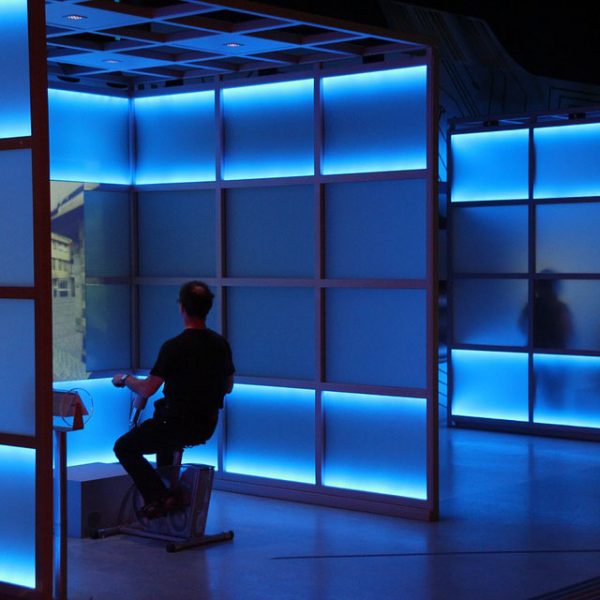
(The last study also found that light from these devices caused free radicals to form in vitro – but as I mentioned before, in vitro values don’t tell us much, and the cells were placed 1 cm away from the light sources, which is not particularly realistic for normal use.)
Comparing the sources
Now that we’ve calculated the values, we can compare the amounts! There’s a catch here – screens tend to put out a higher proportion of the more damaging blue light than sunlight does.
Most of these measurements were also taken of bright white screens, which is not going to be a high proportion of normal use. A lot of people also use red overlays which will cut down the amount of blue light coming out.
But let’s take the worst case scenario – the iMac with a bright white screen – it’s still over 100 times less damaging than the midday sun, and that’s only counting the visible light portion of sunlight. For the 4 inch smartphone with a bright white screen, it’s over 2000 times less damaging.
It’s also worth noting that the amount of visible light from the iPhone is slightly lower than ambient indoor lighting (23 µW/cm² from fluorescent lighting at 137 cm above the floor), but no one has any marketing campaigns about that.
(There’s also an eye study that used slightly different units, with a weighting factor tailored for retinal damage – they also found that in the worst case scenarios, a computer at maximum brightness puts out an average of 1/127th of the damaging visible energy of the midday sun in summer, and a smartphone at maximum brightness puts out 1/40th.)

Verdict
So is visible light from screens worth worrying about? I would say no, for the majority of people. While the comparisons to the sun sound scary, remember that the sun is scary mostly because of UV. In the Nambour study, middle-aged people who wore a UV protective sunscreen daily had no detectable increase in aging for 4.5 years. Visible light also hasn’t been linked to any noticeable changes in the skin apart from increased pigmentation in people with dark skin. While blue light does cause increased free radicals, how much of an effect these radicals have is still unknown, so it isn’t worth panicking about yet.
However, if you’re undergoing a medical treatment that makes you extremely sensitive to visible light (e.g. photodynamic therapy), or if your skin is dark and you want to fade pigment and sunscreen isn’t doing enough, then it might be worth seeking shade and turning down the brightness of any massive computer screens you own a little bit (or just sit back a little bit).
References
Liebel F et al., Irradiation of skin with visible light induces reactive oxygen species and matrix-degrading enzymes (open access), J Invest Dermatol 2012, 132, 1901-1907. DOI: 10.1038/jid.2011.476
Mahmoud BH et al., Impact of long-wavelength UVA and visible light on melanocompetent skin (open access), J Invest Dermatol 2010, 130, 2092-2097. DOI: 10.1038/jid.2010.95
Vandersee S et al., Blue-violet light irradiation dose dependently decreases carotenoids in human skin, which indicates the generation of free radicals (open access), Oxid Med Cell Longev 2015, 579675. DOI: 10.1155/2015/579675
Lei TC et al., Optical profiles of cathode ray tube and liquid crystal display monitors: implication in cutaneous phototoxicity in photodynamic therapy (open access), Appl Opt 2013, 52, 2711–2717. DOI: 10.1364/AO.52.002711
Gringras P et al., Bigger, brighter, bluer-better? Current light-emitting devices – adverse sleep properties and preventative strategies (open access), Front Public Health 2015, 3, 233. DOI: 10.3389/fpubh.2015.00233
O’Hagan JB, Khazova M & Price LL, Low-energy light bulbs, computers, tablets and the blue light hazard (open access), Eye (Lond) 2016, 30, 230-233. DOI: 10.1038/eye.2015.261


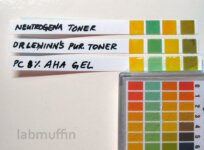
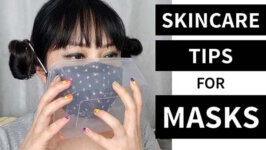

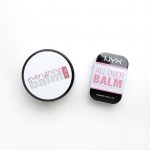
Thank you for actually comparing time in the sun to time in front of the screen, that makes it more understandable. Sadly enough I spend way more time in front of screens than I do out in the sun, be it midday or not…
This makes me curious about products I see out there in the beauty world claiming to protect your skin from blue light/screen time… I figured it was just another sales tactic, and given these results, seems likely. I wonder, though, do they actually do anything?
If I’m atill worried, how can I protect myself? Will UVA/UVB filters work somehow? Should we use anti-oxidants to fight blue light?
What a public service you have provided here, I hope it can be more widely circulated. I have worried about the light exposure from devices for a long time, and am relieved at your conclusions. Thank you for doing the hard work to assess the various risks.
Skinmedica came with a system called Lumivive. Basically it’s 2 serums, one for night and one for day. It’s designed to protect your skin against blue light. I would love trying them because of the ingredients, but the price is way to high.
HI Michelle! Thanks so much for your informative content, I always learn so much from your posts and videos(: Would you please consider doing a segment debunking those LED light therapy face masks, as in whether they really work or just a scam? Thanks so much in advance!
What about blue led light therapy for acne? Is that the same type? Is that also bad!?
You are hands down my favourite beauty blogger of all time: with facts and scientific studies in place of all the nonsense.
Thank you for your time and effort to research this (and other) beauty issues and for sharing your findings with us, instead of keeping all your secrets to yourself. You’r the best!
Very informative. Thank you for sharing.
Hi,
I love your blog, thanks for the info.
I have a question, does the screen light damages our eyes? and if so, is there a way to protect us?
I’ve heard about special glasses, but I have no idea 🙁
Interesting article Michelle.
I’d agree that Blue Light is probably harmless as far as our skin is concerned, but realistically, our eyes aren’t really adapted to handle the amount of Blue Light we “see” today.
I use a software called Iris to filter it out of my laptop screen – it works a charm!
(My review is at https://vitalizedfuture.com/iris-blue-light-filter if you’re interested)
This is interesting. But aren’t you missing a major visible light source between the sun and screens? Like lightbulbs? A 2017 study found that LED light caused darkened pigment in 80% of subjects at 60 J/cm^2 (incandescent light had no effect). There’s been a huge push to change lightbulbs to LEDs for energy efficiency. Office spaces are generally lit to 1.1 W/sqft, which is 0.00118 W/cm^2. To get to 60 J/cm^2, you’d have to spend 50,847 sec or 14 hours in that light. To get to your baseline of 40 J/cm^2, you’d only have to spend 9.4 hours in the office. Which is about how much time I spend in my office. Then I go home, and turn on my LED light bulbs XD
I’d love to hear your thoughts on this.
Do you have a link to the study? I can’t seem to find it…